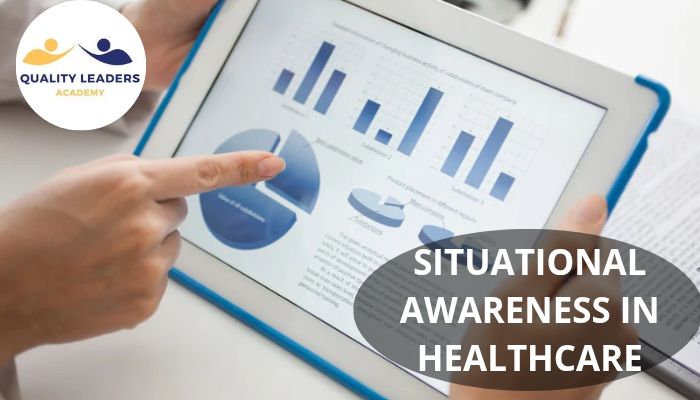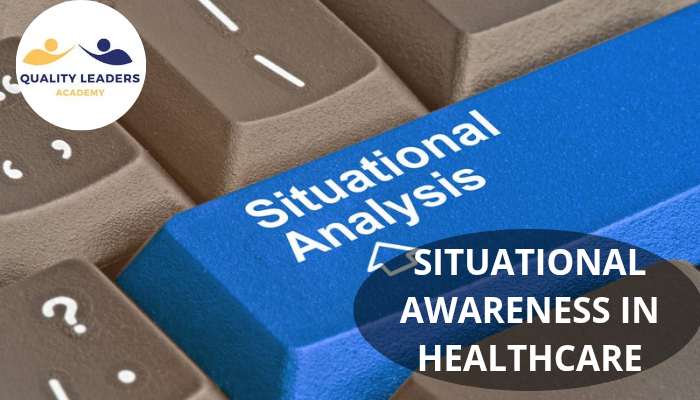Situational awareness in healthcare is the foundation of safe and effective clinical practice. In fast-paced medical environments, the ability of healthcare professionals to understand, process, and respond to what’s happening around them can be the difference between positive outcomes and medical errors. This article explains what situational awareness means in healthcare, why it’s vital, and how providers can improve it to enhance safety and communication.
WHAT IS SITUATIONAL AWARENESS IN HEALTHCARE?

Situational awareness refers to knowing what is happening around you, understanding the implications of changing conditions, and predicting what might happen next. This includes constant awareness of the patient’s condition, the team's coordination, and the clinical environment in healthcare.
This awareness allows clinicians to make informed decisions, respond to changes swiftly, and work efficiently within a team. It also ensures everyone is aligned on the patient’s care plan, reducing communication breakdowns and treatment errors.
THE ORIGINS OF SITUATIONAL AWARENESS: FROM AVIATION TO HEALTHCARE
The concept of situational awareness was first recognized during World War I as a crucial skill for military pilots. Dr. Mica Endsley, a pioneer in the field, formalized the theory in the 1980s. She introduced a three-level model of situational awareness, which has since been adapted to various industries, including healthcare.
Endsley’s Three Levels of Situational Awareness:
Perception:
Identifying critical information, such as abnormal vital signs or changes in the patient's status.
Comprehension:
Understanding what the data means and its relevance to the patient’s condition.
Projection:
Anticipating what will happen next and planning accordingly (e.g., deterioration, escalation of care).
WHY IS SITUATIONAL AWARENESS IMPORTANT IN HEALTHCARE?
According to a 2020 study, failures in situational awareness contribute significantly to medical errors, delays in treatment, and communication failures.
In healthcare, conditions can change in minutes, Patients deteriorate, staff shifts rotate, and urgent decisions must be made.
High situational awareness helps providers to:
- Detect early warning signs of patient deterioration.
- Coordinate effectively with other team members.
- Reduce cognitive overload and stress.
- Avoid diagnostic errors.
- Communicate clearly and confidently.
REAL-WORLD IMPACT: DIAGNOSTIC ACCURACY AND SAFETY
A 2017 study on emergency care teams found that improved situational awareness led to fewer diagnostic delays and safer clinical decisions.
Similarly, a 2020 review highlighted its role in reducing harm in high-risk areas like surgery and critical care.
When team members are not aligned in their understanding of the situation, misdiagnosis, medication errors, and even sentinel events can occur. Shared understanding among clinicians, patients, and caregivers is key to avoiding such outcomes.
THE SHEEP FRAMEWORK: A PRACTICAL TOOL TO APPLY SA
To help implement situational awareness, Rosenorn-Lanng and Michell developed the SHEEP model, which expands on Endsley’s framework by classifying factors that influence clinical errors:
- S – Systems (e.g., policies, electronic health records).
- H – Human Interaction (e.g., communication, teamwork).
- E – Environment (e.g., noise, temperature, lighting).
- E – Equipment (e.g., monitors, pumps, PPE).
- P – Personnel (e.g., training, fatigue, roles).
Clinicians can improve situational awareness by assessing each of these areas and asking:
- What is happening now?
- Why does it matter?
- What should I do next?
KEY BEHAVIORS THAT PROMOTE SITUATIONAL AWARENESS
High-performing healthcare teams intentionally build and maintain situational awareness through the following behaviors:
- Sharing key information among team members
- Asking questions or requesting clarification when unsure.
- Directing communication clearly to the appropriate person.
- Include patients and caregivers in relevant discussions.
- Using visual tools, such as dashboards and whiteboards.
- Keeping documentation updated and accessible.
- Understanding the treatment plan and changes to it.
- Notifying team members of any shift in roles or care plans.
- Recognizing signs of overload or distraction within the team.
Regular debriefings and pre-procedure huddles are also proven ways to align team members and maintain awareness.
HOW TO IMPROVE SITUATIONAL AWARENESS IN PRACTICE

Improving situational awareness begins with individual reflection. Clinicians can start by assessing how consistently they perform the behaviors listed above. Choosing one area to improve and setting small, daily goals can create lasting habits.
For Leaders:
- Encourage team members to share what they’re working on during meetings.
- Use checklists and standardized communication tools like SBAR (Situation, Background, Assessment, and Recommendation).
- Create a culture where it’s safe to speak up and ask questions.
- Provide training in nontechnical skills like teamwork and decision-making.
THE ROLE OF TECHNOLOGY IN ENHANCING SITUATIONAL AWARENESS
Modern tools such as electronic health records, alarm systems, and real-time dashboards can enhance situational awareness, but only when used correctly.
Poorly designed or overly complex systems can increase cognitive load and distract from patient care.
Healthcare systems should aim to simplify workflows and integrate technology that provides clear, actionable insights rather than overwhelming alerts.
PATIENT AND FAMILY INVOLVEMENT
Including patients and family caregivers in conversations about care plans and progress contributes to shared understanding and mutual trust. When patients are aware of their condition and the next steps, they are more likely to engage, comply with care plans, and report concerns early.
Situational awareness in healthcare is essential for making accurate decisions, avoiding preventable errors, and improving teamwork. By adopting models like Endsley’s three-level framework and the SHEEP tool, healthcare professionals can develop a structured approach to improving awareness and reducing risk.
Every clinician, regardless of role, can take steps to improve their situational awareness. In doing so, they protect their patients, themselves, and their teams.
Read also:
Certified professional in patient safety
References:
https://pubmed.ncbi.nlm.nih.gov/32115301/
https://www.bjanaesthesia.org/article/S0007-0912
https://pubmed.ncbi.nlm.nih.gov/32576465/
https://www.sciencedirect.com/science/article/pii/S2772501422000033


